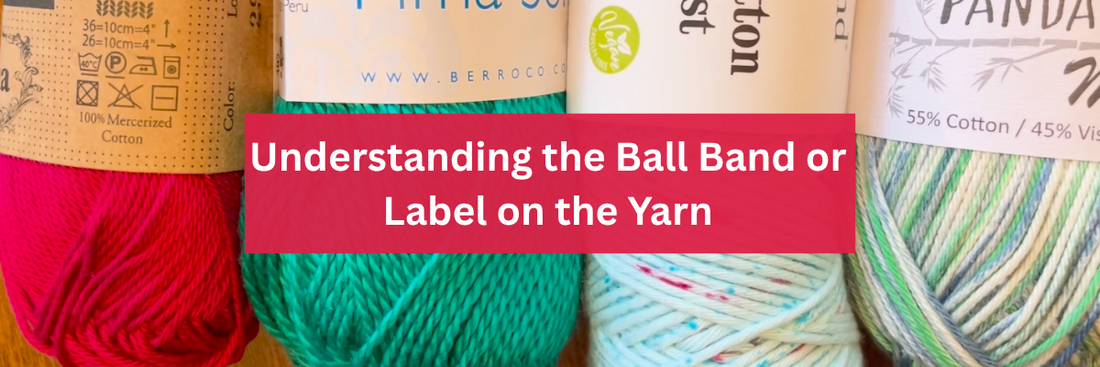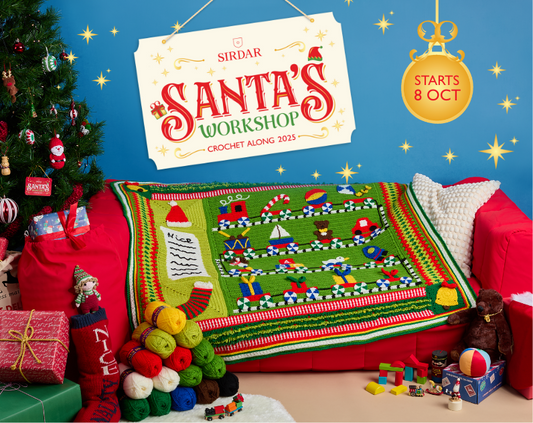Yes, that is a very long title, but such a common question from my customers, no matter how advanced they are with their knitting or crochet skills. Reading the information on the label will help you pick out the correct yarn for your projects. This is how I break down reading labels that are attached to the yarn you are about to purchase.
1. Yarn Weight
- What it means: This tells you how thick or thin the yarn is, which will help you pick the right pattern and tools.
- Why it matters: If a pattern calls for "worsted weight" yarn (Category 4) and you use "bulky" yarn (Category 5), your project might turn out much bigger than expected.
-
What to look for:
- Look for the yarn weight symbol, which is usually a number (like 4 for worsted) or a word like "Light" or "Bulky."
- Example: "Category 4: Worsted"
2. Suggested Needle or Hook Size
- What it means: This tells you what size knitting needles or crochet hook to use with that yarn.
- Why it matters: Using the right size needle or hook helps make sure your stitches are the correct size and your project looks as intended.
-
What to look for:
- A little diagram with a knitting needle or crochet hook and the size next to it (usually in millimeters or US sizes).
- Example: "Knitting needles: US 8 (5mm)"
3. Yardage or Meterage
- What it means: This tells you how much yarn is in the ball or skein.
- Why it matters: It helps you know if you have enough yarn to finish your project.
- What to look for:
- Usually expressed in yards or meters.
- Example: "200 yards (183 meters)"
- If just meters are mentioned, you can multiply the meters by 10% and add that number to the meters and that will give you the yardage. I had a very good friend that taught me that trick.
- Example: 183 x .10 = 18.30, add 18.30 to 201.3 yards
4. Care Instructions
- What it means: This tells you how to care for the yarn after you finish your project.
- Why it matters: Some yarns need special care, like hand-washing, while others are machine washable.
- What to look for:
A symbol chart that shows washing and drying instructions.
Example: A little tub with water = machine washable; a triangle = do not bleach.
5. Fiber Content
- What it means: This tells you what the yarn is made of (wool, cotton, acrylic, etc.).
- Why it matters: Different fibers behave differently. Wool is warm and stretchy, acrylic is easy-care, and cotton is breathable and soft.
- What to look for:
- Example: "80% Acrylic, 20% Wool"
- Example: "80% Acrylic, 20% Wool"
6. How many grams or oz. the skein or ball of yarn is – DOES MATTER – Yardage is important
- All Weights of yarn may not have the same yardage, even though they may weigh 50 grams or 100 grams.
- For example:
- Berroco Pima Soft is a DK (or Double Knit) weight yarn, it weighs 50 Grams, and yardage is 124 yds.
- Pandamonium by Cascade is a DK weight yarn, it weighs 100 Grams, and yardage is 273 yds.
- If a pattern calls for 2 skeins of Pandamonium, and substituted with Pima Soft, I would need 5 skeins of Pima Soft, because 2 x 273 =546 yards, divide 546 by 124 = 4.4 Skeins of Berroco Pima Soft.
- Vento by Berroco is a DK weight yarn, it weighs 50 grams and has 219 yds.
In conclusion all same weight yarns may weigh the same, but does not mean they will have the same amount of yardage.
YarnSub is a great website to go to when you are going to substitute the suggested yarn for one that may be in your stash, or you do not have access to.
There is even more information to share, as all ball bands may not supply the information in a format that you are accustomed to reading or recognize. Check out my youtube station for more details – don’t want to overwhelm you.











